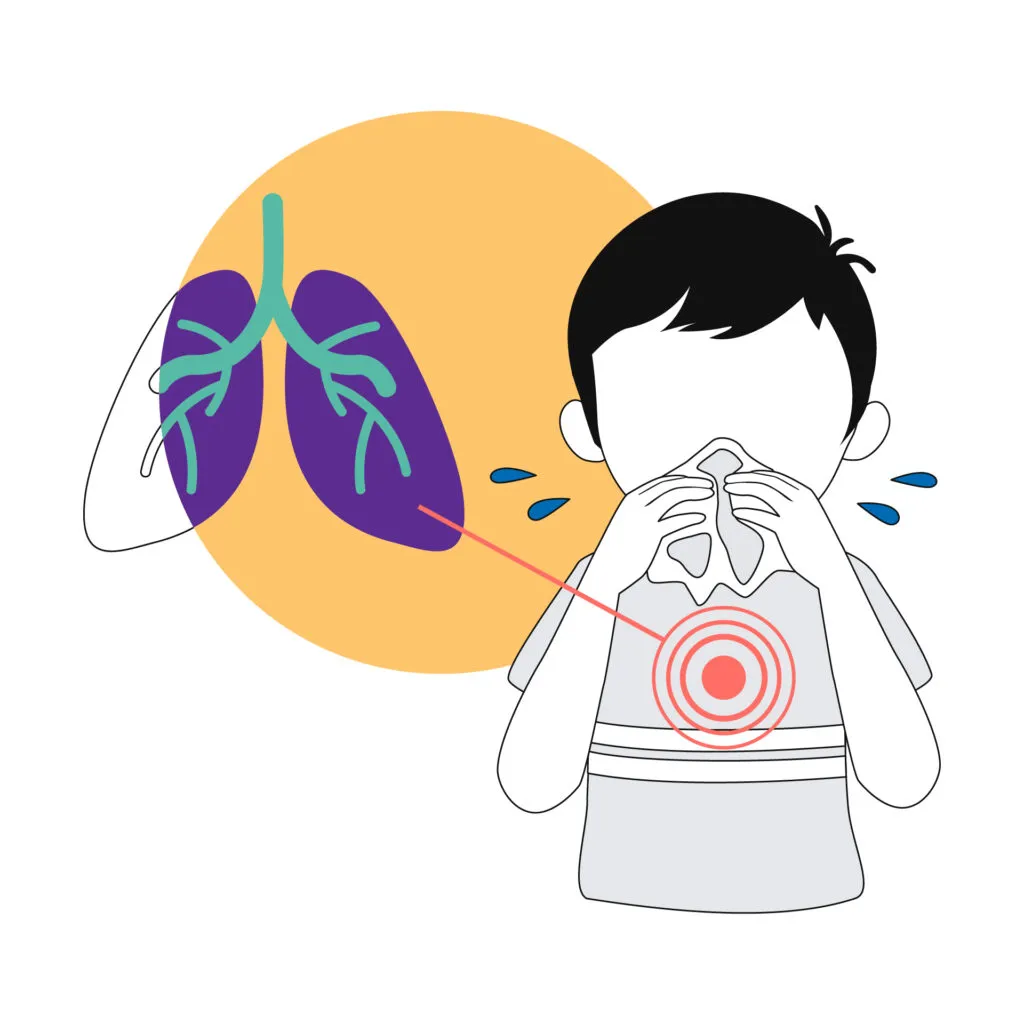Pneumonia in Children: 9 Top Facts You Need to Know
- Key facts about pneumonia
- A brief overview
- What are the fundamental pneumonia causes?
- What are the major pneumonia symptoms?
- How is pneumonia transmitted?
- What are the risk factors for pneumonia in children?
- How to diagnose pneumonia in children?
- What is the treatment for pneumonia?
- Can pneumonia in children be prevented?
- Conclusion
- FAQs
Synopsis
While pneumonia is responsible for the highest number of childhood mortality cases worldwide, it’s wise to learn about the condition. Find out all about pneumonia – from symptoms to treatment.
Key Takeaways
- Every year, more than seven lakh infants under five die of pneumonia
- Pneumonia can be caused by bacteria, viruses or fungi
- In cases of pneumonia from bacteria, treatment can be done with antibiotics
When it comes to pneumonia, a common tendency is to link the disease with the elderly. But it is the reason for the largest number of child deaths worldwide. More than seven lakh children under five die of pneumonia every year, with over 153,000 being highly vulnerable newborns. Unfortunately, essential health services and treatments do not reach lakhs of children, which could have been a key factor in childhood pneumonia prevention [1] [2]. Read on to learn about childhood pneumonia symptoms, pneumonia causes and treatment, and the overall pathophysiology of pneumonia.
Key facts about pneumonia
Here are some important facts you must know about pneumonia:
- In 2019, pneumonia was responsible for 14% of under-five mortality cases, killing around 7.5 lakh children
- Responsible factors for pneumonia include fungi, bacteria and viruses
- Prevention measures for pneumonia include sufficient nutrition, immunization, and reducing the environmental factors
- In cases where bacteria cause pediatric pneumonia, treatment can be done with antibiotics. However, only one-third of affected children get access to the antibiotics they require
A brief overview
A chronic respiratory infection, pneumonia, impacts the lungs and fills its alveoli with pus and fluid. As a result, breathing in and out becomes painful, and your oxygen intake gets affected. The number of deaths caused by pneumonia is maximum in southern Asia and sub-Saharan Africa. However, simple measures make it possible to guard children against pneumonia. Treatment is also feasible at low costs, low-tech medication and care.
What are the fundamental pneumonia causes?
It is important to remember the source cause of pneumonia differs from case to case. It can be caused by bacteria, viruses, or fungi transmitted by air. Here are the most common
agents that carry this infection:
- Respiratory syncytial virus: This is the virus responsible for the highest number of viral pneumonia
- Streptococcus pneumoniae: Infections from these bacteria are the most common cause of bacterial pneumonia among infants
- Haemophilus influenzae type b (Hib): This ranks second among the most common causes of bacterial pneumonia
- Pneumocystis jiroveci: Infants who have HIV are at high risk of getting infected by this virus. It causes about one-fourth of all pneumonia deaths among children infected with HIV
- Klebsiella pneumoniae: This bacterium usually lives in the intestines of human beings and doesn’t cause any disease. However, if it spreads to other parts of the body, it can lead to pneumonia or other diseases like meningitis, bloodstream infections, and urinary tract infections
What are the major pneumonia symptoms?
As pneumonia impacts the lungs, the usual symptoms include breathing difficulties, fever and coughing. In addition, infants who have pneumonia show visible signs like heavy breathing or retraction of the lower chest during inhalation. Note that this contrasts with healthy people whose chest muscles expand while breathing in.
How is pneumonia transmitted?
Pneumonia can be transmitted in different ways as it is a contagious infection. It can be transmitted through the air (via coughs and sneezes) or bodily fluids such as blood. One can also get infected from a surface that has already been contaminated.
What are the risk factors for pneumonia in children?
For healthy children, it is not difficult to fight pneumonia with their natural de fences. However, infants who suffer from malnutrition and have a weak immune system are more prone to getting pneumonia. Apart from these, pre-existing conditions such as measles and HIV infections also put one at higher risk of developing pneumonia. Moreover, environmental factors such as crowded homes, indoor air pollution, and smoking by parents also make a child more susceptible to pneumonia.
How to diagnose pneumonia in children?
Health workers usually conduct a physical exam to diagnose pneumonia to identify irregular breathing patterns. They can also ask for blood tests or chest x-rays for a detailed diagnosis. In countries with advanced healthcare systems, healthcare workers rely on counting the number of breaths an individual takes per minute to diagnose pneumonia. However, the definition of ‘fast breathing’ depends on the age of the child. You must note that infants usually breathe faster than older children.
What is the treatment for pneumonia?
Doctors determine pneumonia treatment courses as per the type of the disease. In developing countries, the maximum number of pneumonia cases is induced by bacteria, and their treatment includes low-cost oral antibiotics. Yet only one in three of the pneumonia-affected children get these antibiotics because they need more infrastructure for quality healthcare. However, the treatment required for pneumonia caused by mycobacteria and viruses is different. Only in cases of severe pneumonia do doctors advise hospitalization.
Additional Read: World Pneumonia Day: How Pneumonia Affects the Body
Can pneumonia in children be prevented?
You can prevent pneumonia in children by providing them with balanced nutrition and helping them adhere to suitable healthcare measures. Apart from that, reducing levels of air pollution is the key to ensuring happy and healthy lungs. To get started, make sure a child is breastfed for the first six months of its existence. Apart from preventing pneumonia, it keeps several illnesses at bay! Also, make your home free from indoor air pollution, or if you live in a crowded home, make sure to practise good hygiene. This also reduces the number of people suffering from pneumonia. In addition, for children who are infected with HIV, doctors usually prescribe the antibiotic cotrimoxazole to limit their risk of getting infected by pneumonia.
Conclusion
Wondering what is the diet for pneumonia or whom to consult to build ayurvedalung health? Get a consultation now on the Bajaj Finserv Health Platform. Upon consultation, a general physician registered with the platform will answer your questions regarding pneumonia symptoms, causes, and treatment. So get yourself registered right away to be two steps ahead in all things health!
FAQs
Is there a pneumonia vaccine?
Yes, there is. But, more than 50% of children worldwide have no access to the primary vaccine to protect against pneumonia, also known as the Pneumococcal vaccine (PCV).Researchers are now developing a new vaccine to treat the viral causes of pneumonia.
How is wasting linked with pneumonia-related deaths?
Wasting is the eventual consequence of malnutrition. It makes a child extremely thin and their immunity system extremely weak, and thus they become more vulnerable to diseases like pneumonia. Usually, wasting can impact children under two suffering from malnutrition. Therefore, make sure to give your child balanced nutrition to stay safe from pneumonia and similar diseases.
- https://www.who.int/news-room/fact-sheets/detail/pneumonia
- https://www.unicef.org/stories/childhood-pneumonia-explained
Please note that this article is solely meant for informational purposes and Bajaj Finserv Health Limited (“BFHL”) does not shoulder any responsibility of the views/advice/information expressed/given by the writer/reviewer/originator. This article should not be considered as a substitute for any medical advice, diagnosis or treatment. Always consult with your trusted physician/qualified healthcare professional to evaluate your medical condition. The above article has been reviewed by a qualified doctor and BFHL is not responsible for any damages for any information or services provided by any third party.



